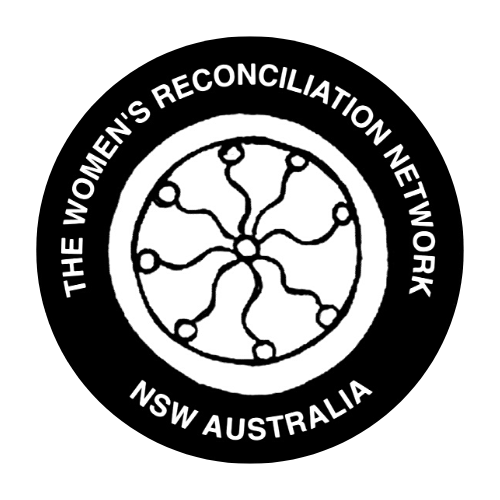What led you to become involved with WRN?
I was born into all the privilege of a post war Anglo-Saxon heritage family and educated in state schools. When I left, I had all the opportunities to travel, study, work, start my own businesses, and create my own future. It was not until I went to University in my 40’s that I began un-learning. I had never met an Aboriginal person, knew nothing of Australian history, nor was politically or socially aware of the reality of my advantages. It came as a shock that I was so ignorant and as a result racist.
I studied Aboriginal History, Culture and Spirituality and this changed my life. I embraced this ancient wisdom, learnt about the Dharawal country that I live on (below I have been painted up with our totem- the whale), and have continued to learn what I can from First Nation’s elders, teachers, community members, and their children. It has been my greatest joy in life.
Consequently I am an educator, advocate and activist, as the un-learning of mature adults is a huge task. The truth about Australian history was not told in schools, consequently the myths, stereotypes and prejudices prevail through this ‘lack of knowledge’.
In your view, what are the biggest challenges Australia is still facing in regard to reconciliation?
Systemic unconscious intrinsic racism – the recent Australian longitudinal study referred to by Tony McAvoy QC, showed that 75% of Australians showed a bias against First Nations Australians. This is the critical unspoken reality that pervades the psychology of the people who claim to be ‘proud Australians’. These same peoples boast the most successful multicultural country in the world and fail to honour the multicultural First Nations people whose countries, children, language, culture and lore were invaded and stolen. The institutions of ANZAC fail to acknowledge the frontier wars with First Nations in our own country.
What are your aspirations for Australia’s future in terms of relationship between Australia’s First Nations people and Australia’s settler communities?
Narragunnawali: Education is the answer. (paper commissioned by Reconciliation Australia).
I am very grateful that the Early Years Learning Framework – the National Curriculum in Early Childhood – has Aboriginal Culture as an integral component. I am also a member of the AECG which promotes active participation by Aboriginal people in the consultative and decision making process of education and training related matters. The impact of both these initiatives is that parents, teachers and children all learn about First Nations history, culture and lore. There are also wonderful inroads into primary and higher education – however – it’s the people who are not learning that we have to reach to shift them from their intergenerational racism. This requires ‘unlearning’ before they can accept the truth telling. I wonder how many of this 75% have ever known or engaged with the approx. 3% of First Nation’s people- this includes our leaders and politicians?
The Australian constitution, which is mapped to the British Law and the Crown, was written in England before British settlement, by law makers who had no knowledge of this country. Even as new laws were written in the ‘colonies’, there was no official rejection of the British claimed sovereignty of these First Nations. This ‘rule book’ creates power in Australian society – determining who can do what to whom, establishes the legitimacy of and relationships between, people and institutions, and recognises values and national aspirations.
How many of the 75% of adults know this truth – this Australia that they love has been stolen from approx. 500 First Nations around the continent. Each one of these nations had their own lore – dating back 60,000 years, passed down through story telling, song, dance, rock and sand paintings, and language.
The Uluru Statement from the Heart is the way forward, and states that their sovereignty has never been ceded or extinguished and co-exists with the sovereignty of the Crown. ‘How could it be otherwise? That peoples possessed a land for sixty million millennia and this sacred link disappears from world history in merely the last two hundred years? With substantive constitutional change and structural reform. We believe this ancient sovereignty can shine through as a fuller expression of Australia’s nationhood.’ This is a gift to the nation – to give is to receive.

